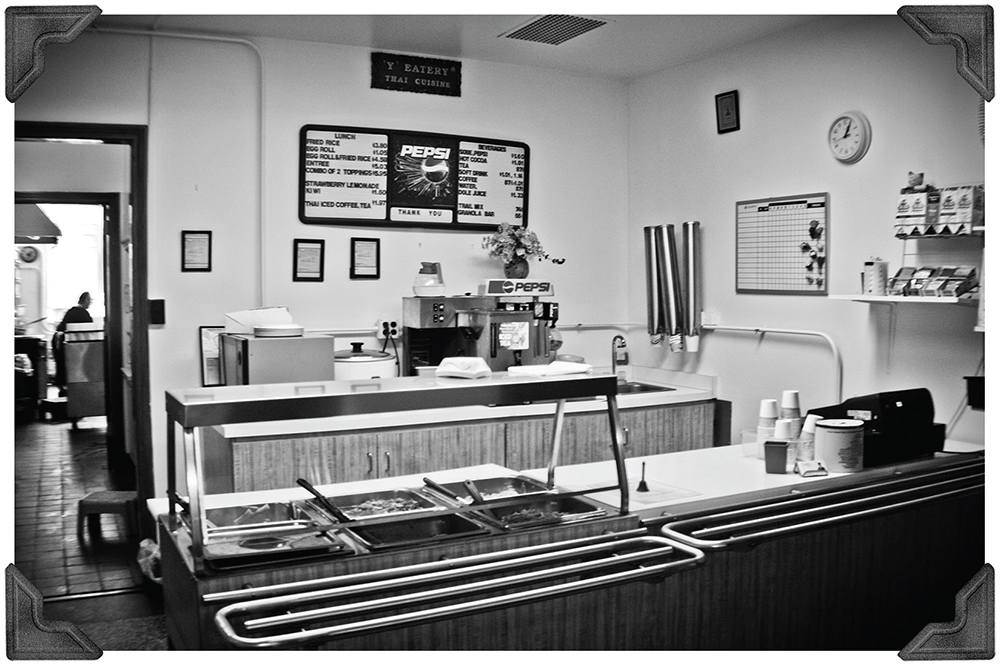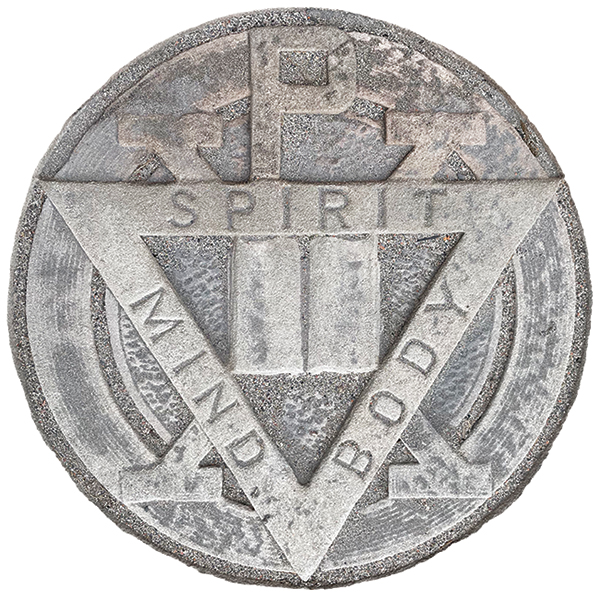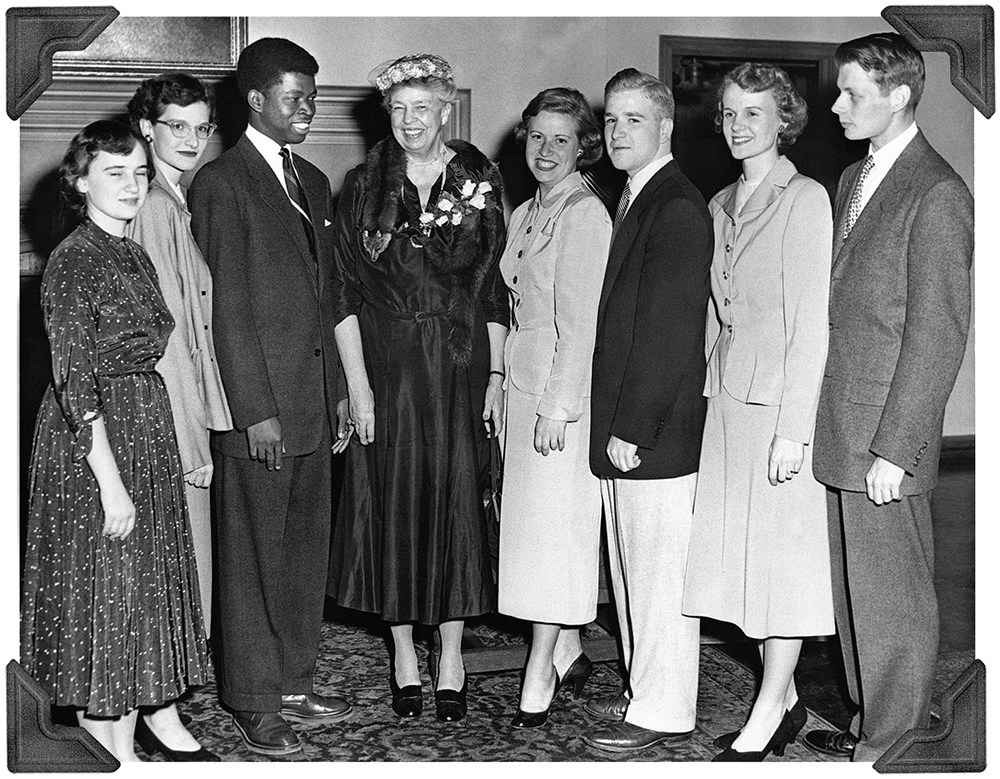University YMCA
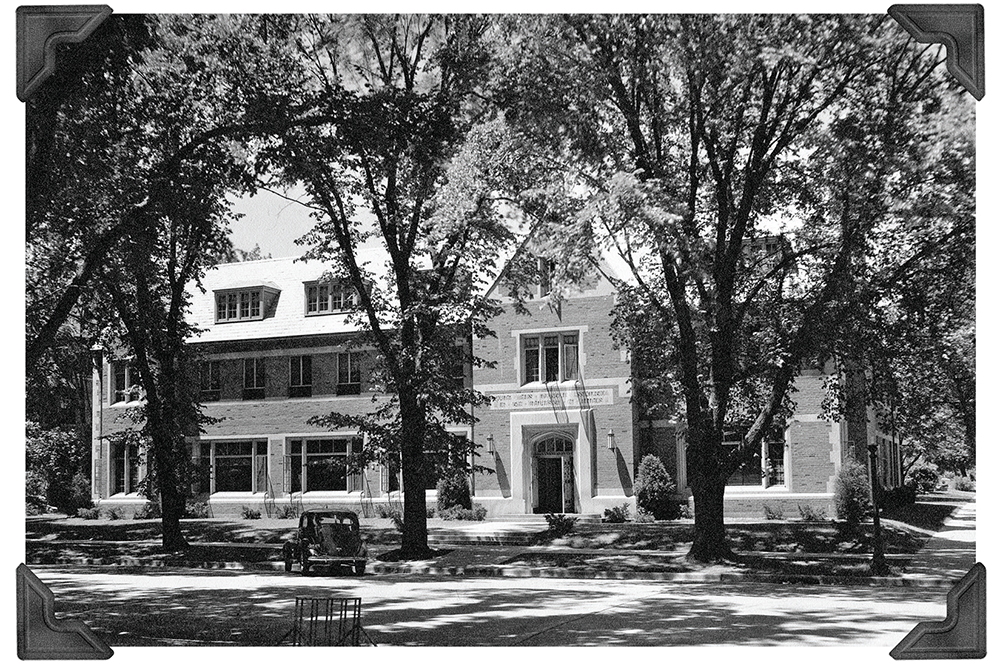
Although strongly tied to the University of Illinois, the University YMCA is an independent, not-for-profit entity. (Image courtesy of University YMCA)
What really lasts for 150 years? If the 1873 attendees of Illinois Industrial University visited the U of I campus today, what would they recognize? Perhaps they’d identify some of the geography or Boneyard Creek, but virtually none of the current campus buildings existed at that time. It’s become an almost entirely different world—even the University’s name has changed. But those students still might recognize one institution: the YMCA.
This year, the University YMCA celebrates the 150th anniversary of its founding. While it’s always been an independent, not-for-profit entity, the University Y’s history is deeply intertwined with that of the U of I. It has been an integral part of the campus’ development and created many of the blueprints for services and offerings that today’s Illini now take for granted.
For example, before the U of I residence halls existed, the University YMCA was housing students. Before the University developed its international programs, the YMCA was striving to improve the college experiences of international students. Before first-year-student and new-faculty programs existed, the YMCA was welcoming newcomers to campus. Before the I Book, the YMCA was publishing its Student Handbook. Before the University developed its student employment services, YMCA staff were helping students find jobs. The list goes on.
On a recent summer morning, Jim Hinterlong, ’92 LAS, the University Y’s executive director, greeted a visitor at the association’s building on Wright Street. Hinterlong paused to compliment the efforts of Roger Master, the building’s superintendent, who had the front lawn looking immaculate, despite drought conditions.
Indeed, there is a sustained, healthy energy about the place. Hinterlong was a YMCA member as a U of I student. After graduation, he spent 20 years as a professor and university administrator in Florida and Virginia before returning to Illinois to serve as the University YMCA’s 22nd director. Today, he oversees a staff of 22, along with 16 to 20 student interns and work-study students. The association has more than 300 dues-paying members, and an estimated 6,000 to 8,000 people participate in its programs every year.
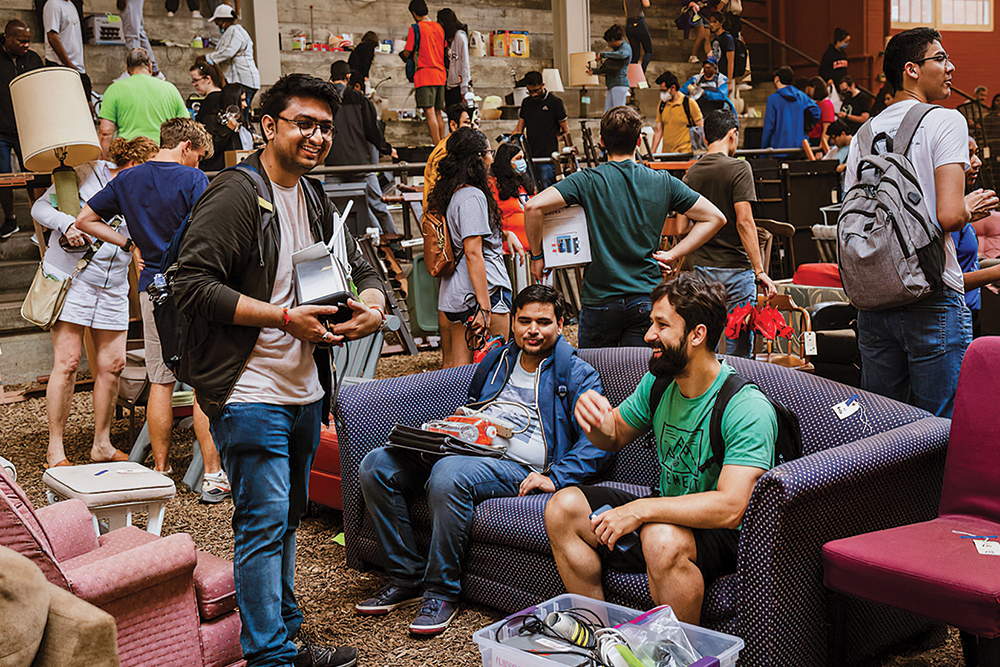
The University YMCA’s long success can be attributed to the association’s willingness to create new opportunities, and address the community’s and University’s latest challenges. (Courtesy of University YMCA)
The University YMCA operates the New American Welcome Center as well as Dump & Run, which gathers more than 30 tons of discarded furniture, clothes, small appliances and other household items every year and resells them during its annual “Big Sale.” In addition, the Y’s Friday Forum and Conversation Café, a weekly campus lecture and discussion series, is in its 96th year. And the YMCA’s Fred S. Bailey Scholarship Program for Cause-Driven Leadership awards more than $180,000 in renewable scholarships every year to 40 to 70 students, making a difference on campus and in their communities. More than $5 million in Bailey scholarships has been awarded to date.
The YMCA building also accommodates more than a dozen registered student organizations, ranging from Engineers Without Borders and Amnesty International to Interfaith In Action and the Philippine Student Association. Other tenants include the University’s Office of Civic Life, Diversity & Social Justice Education, The Daily Illini, WPGU Radio, the Education Justice Project, the Uniting Pride Center of Champaign County and the Y Thai Eatery.
With so many activities, services and causes, it’s hard to imagine campus without the University YMCA. Nevertheless, the association has faced its share of challenges over the years, including fires, faltering membership (during the Great Depression) and periods of soul-searching change, such as the aftermath of World War II and the civil unrest of the 1960s. Even so, by 1914, the University Y was the nation’s largest campus YMCA—and by 1950, it had become the world’s largest student YMCA.
Despite University Y’s success, the majority of college YMCAs have not withstood the test of time. Of the 739 campus YMCAs that existed in the U.S. during the 1940s, only six are in operation today, and the U of I and Virginia Tech YMCAs are the only independent ones.
Why has University YMCA succeeded while the others have faltered? Hinterlong, a student of the Y’s history, cites several reasons: The association owns its own building; it has its own endowment; and its leaders regularly reflect on the organization’s mission and how they can create new opportunities and address the latest challenges faced by the community, as well as the campus.
“It could be argued that the secret to our long success has been our willingness to invite all members of the campus and community to participate in generous and difficult conversations, propose and pursue innovative solutions, and engage in thoughtful reflection on what’s needed in this moment,” Hinterlong says. Indeed, the University YMCA champions a wide range of social causes—from fighting racism and advocating for free speech to sponsoring local youth programs and preserving the environment.
The University YMCA is well aware of its significance to the campus and has published two books that thoroughly document its history. One Hundred Years of Action: The University of Illinois YMCA, 1873–1973 by Harold Hannah, ’32 ACES, JD ’35, was written for the association’s 100th anniversary; and The Promise of Association: A History of the Mission and Work of the YMCA at the University of Illinois, 1973–1977 by Scott J. Peters, ’83 ED, written for its 125th anniversary. Both books underscore how some of the biggest names in the University’s history also played key roles in the YMCA’s formative years.
Those prominent figures include John Milton Gregory, the University’s first regent; Thomas J. Burrill, 1912 HON, a giant in the field of botany who served as the first chairman of the University YMCA board of directors; and former Dean of Undergraduates, Thomas Arkle Clark, ’40 ENG, who helped the University Y significantly boost its membership.
“There are names aplenty,” Hannah wrote in the introduction to One Hundred Years of Action. “Not by intent but because the Y is, has been, and will be the people who have labored, given, participated and philosophized within its structure.”
Hannah’s thoughtful approach to his book mirrors the University YMCA’s philosophy towards its own name, which stands for Young Men’s Christian Association. The YMCA has, in fact, welcomed women for most of its existence, and its stated mission hasn’t emphasized any exclusively Christian ideology since 1990. Also of note, the University YMCA provided the first prayer space for Muslim students on campus.
“Christian focus is part of our historic identity. But it’s not how we express ourselves now,” Hinterlong says.
Certainly, the organization has come a long way since the winter of 1873, when Col. Robert Weidensall, a Civil War veteran hired by the national YMCA to establish association chapters at universities, launched a YMCA and a Young Women’s Christian Association at the U of I.
While the University YMCA adhered to Christian principles from the start and even offered widely attended Bible study courses, it was clear early on that the association was firmly aligned with community building in ways that went beyond religious beliefs.
In 1904, the University Y’s bylaws officially stated that it would begin admitting students of “strong moral character” into its ranks, no longer limiting membership to Christian students. Five years later, when the chapter built and moved into a new building on Wright Street, Burrill answered a letter writer who asked which students had access to the building.
“This YMCA is accomplishing a magnificent work of the highest importance,” Burrill replied, adding that students of all denominations and non-YMCA members were free to use the building “at no discomfort to anybody.”
The building that Burrill invited all to enter in 1909 was eventually renamed Illini Hall, a three-story edifice that the YMCA used as a dormitory and a center for international programs. It was later acquired by the University, which used it for a variety of purposes until earlier this year, when the structure was demolished to make way for a new 140,000-square-foot facility.
As workers tore down the building façade, they uncovered the YMCA seal that had been set in stone above the main doors when Illini Hall was built. At the University YMCA’s request, the seal was carefully removed and will soon be placed in a suitable, permanent location on the current YMCA property as a reminder of the association’s enduring mission.

